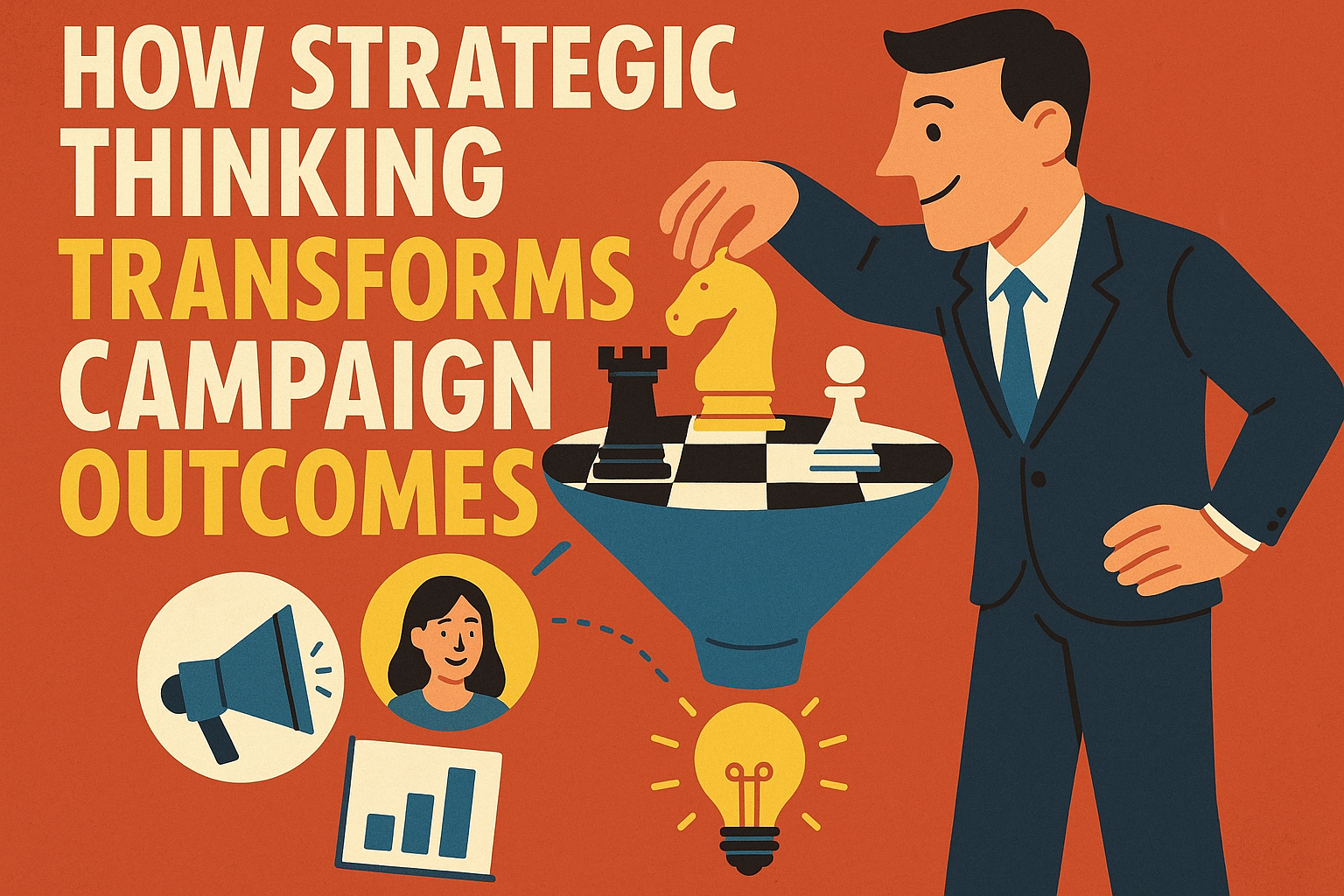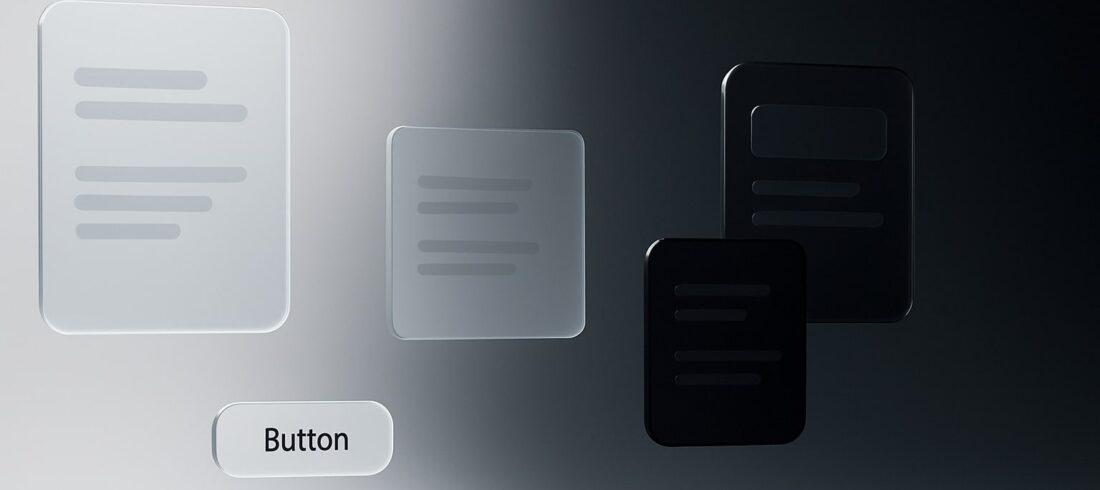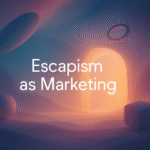
“If your marketing campaign feels like throwing glitter at a fan and hoping it sticks, this one’s for you.”
Let’s be honest, anyone can make a campaign look good. Throw in some flashy visuals, a punchy headline, maybe a celebrity talking about “authenticity,” and boom, people might notice.
But without strategy? It’s just an expensive cake with decoration and no taste.
Strategic thinking in marketing isn’t just a line on your pitch deck. It’s the reason some brands launch with impact, while others fizzle before the first click.
Just look at how Narrative repositioned Karnataka’s Global Investors Meet 2025 not as another business event, but as a global conversation on inclusive, tech-driven economic growth.
Strategy Isn’t Sexy—But It Sells
Before you panic: no, this isn’t a manifesto against creativity. This is about pairing creative campaign strategy with serious brains. You need ideas that sing and systems that scale.
The best campaigns are equal parts heart and head. They don’t just show up on your feed—they show up with intention. And that’s the power of strategic brand communication: it gives creativity a purpose and performance a plan.
Example: Dove’s “Real Beauty” campaign wasn’t just a pretty face. It was backed by strategic insights around representation and self-esteem, turning emotional truth into global engagement.
From Chaos to Cohesion: The Role of Integrated Strategy
Let’s talk alignment.
A billboard in Kormangala (that’s in Bangalore btw). A reel in someone’s bathroom scroll zone. A jingle on Spotify. If they’re not singing the same tune, you’re just spamming people in stereo.
A good integrated campaign strategy connects every touchpoint from offline to online with a single thread. That’s the magic of an integrated marketing campaign: it’s not about being everywhere, it’s about being everywhere with a point.
Example: Nike’s “You Can’t Stop Us” united TV, social, digital, and athlete activations under a single, powerful story.
Strategy That Starts With Story
You don’t need another trend. You need a story.
Enter: brand storytelling strategy. This is where your campaign stops being a sales pitch and starts being a narrative your audience can step into. What do you stand for? What problem are you solving? Why should anyone care?
If your answers sound like your competitor’s LinkedIn summary, you’re not doing it right. Strategy is what turns those answers into emotional anchors.
Example: Airbnb’s “Belong Anywhere” repositioned the entire brand around emotional storytelling instead of just bookings.
But… What Does Strategy Actually Do?
Glad you asked. Let’s break it down.
A solid strategy helps:
- Define your north star (no more aimless creativity)
- Clarify your audience (no more talking to “everyone”)
- Set real goals (not “go viral”)
- Build a roadmap (hello, campaign performance optimisation)
This is the difference between a one-hit wonder and a high-impact brand campaign.Example:Spotify Wrapped is strategy and storytelling in perfect sync built on user data and designed for shareability.
The ROI of Smart Strategy
If you’ve ever had a client ask, “So… what did this campaign actually do?” you already know how valuable strategy is.
Here’s how to improve campaign performance without resorting to desperate budget boosts:
- Start with insights, not assumptions
- Marry emotion with data
- Optimise based on actual behaviour, not wishful thinking
This is where effective brand communication meets analytics. Strategy makes sure your message lands—again and again.
Example: Old Spice’s “Smell Like a Man, Man” used performance data to iterate the campaign over years, driving ongoing success.
Real Talk: What Strategic Thinking Looks Like in Action
Let’s say you’re launching a new product. You could:
- Make a flashy launch film, drop it on YouTube, and pray.
- OR you could build a creative campaign strategy that includes influencer teases, email anticipation, in-store storytelling, and post-launch nurture loops.
Guess which one performs better?
The best strategies aren’t just creative, they’re layered. They give your campaign space to breathe, evolve, and sell long after launch day.
Example: Apple’s product launches are strategic theatre, every detail is designed for engagement, coverage, and conversion.
Okay, But How Do I Actually Build Strategic Campaigns?
Some quick-fire rules to keep you grounded (and sane):
- Think audience-first, not brand-first. Your user doesn’t care how clever your tagline is if it doesn’t solve their problem.
- Be ruthlessly consistent. Great strategy survives five platforms, six formats, and seven stakeholders.
- Use data—but don’t lose soul. Insights are ingredients, not the recipe.
- Always optimise. Always. If your campaign’s flying blind after launch, you’re burning money.
The ultimate flex? A data-driven marketing campaign that makes people feel and click.
In Short
Without strategy, you’re gambling. With it, you’re building.
Because let’s be honest, creativity gets attention. Strategy gets results. And when the two work together? You’ve got a campaign that doesn’t just go viral, it goes places.
That’s the difference between forgettable fluff and brand-building gold.
So the next time you’re tempted to jump into execution mode, take a step back. Ask the big questions. Find the human truth. Build the plan. Then execute with fire.Because in the end, anyone can make a campaign.





